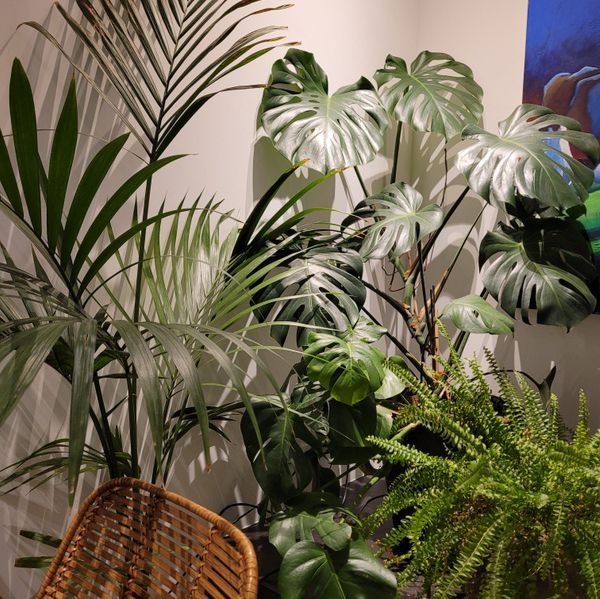
25/11/2019
How much water do your houseplants need
I found this article on Houzz and thought I'd share it:
5 Ways to Tell How Much Water Your Houseplants Need
Lauren Dunec Design 20 Nov 2019
Low water: allow soil to completely dry out between watering. All types of cactus and succulents, mother-in-law’s tongue (Sansevieri trifasciata) and cast iron plant (Aspidistra elatior).
Low to moderate water: allow soil to partially dry out between watering. Most palms, dracaena (Dracaena marginata and D. deremensis), pothos (Epipremnum aureum), culinary herbs such as rosemary and thyme, English ivy (Hedera helix), bird of paradise (Strelitzia reginae) and umbrella tree (Schefflera actinophylla and S. arboricola).
Moderate water: allow soil to partially dry out between watering, but always keep soil slightly moist. Bird’s nest fern (Asplenium nidus), bromeliads, fiddle-leaf fig (Ficus lyrata), geranium (Pelargonium), coleus (Plectranthus scutellarioides), citrus varieties, culinary herbs including basil, parsley and coriander, moth orchid (Phalaenopsis), heartleaf philodendron (Philodendron scandens), phlebodium fern (Phlebodium) and ZZ plant (Zamioculcas zamiifolia).
Moderate to high water: always keep soil moist. Lucky bamboo (Dracaena braunii), maidenhair fern (Adiantum capillus-veneris) and Swiss-cheese plant (Monstera deliciosa).
Where is the plant located?
How much light a plant needs not only depends on the type of plant, but also whether it’s situated by a sunny window or in a shadowy corner. This can make a big difference to how quickly the soil dries out. A potted plant will dry out much faster when situated in bright light and a warm environment than a plant placed in a cooler, darker area of the house.
Watch out for plants placed close to heaters or air conditioners, which can dry out the soil and zap humidity from the air. Ideally, move plants away from heaters and air conditioners, and invest in a humidifier if you keep the heat on in winter.
Also keep an eye on plants in small containers in direct sun, as they can dry out very quickly. Even sun-loving cactuses and succulents are unhappy in bone-dry soil, which can happen quickly on a hot day.
To give yourself more of a buffer between waterings, repot plants into larger containers with fresh potting soil. A larger soil reservoir will retain more water and dry out slower than smaller pots.
Has the top of the soil dried out?
Once you’ve determined your plant type, or at least which moisture-level category it falls into, you can check the top of the pot’s soil to see if your plant needs water. Take a look, or better yet, poke a finger down three to five centimetres of soil to determine the moisture level.
How much you should allow the soil to dry out depends on the plant type and time of year, but most indoor plants thrive when you allow the top three to five centimetres of soil to either completely dry out (no moisture) or slightly dry out (still some moisture) between waterings.
How heavy is the pot when lifted?
The quickest way to get a rough estimate of a container’s moisture level, besides the finger test, is to lift the pot. In most cases, wait to water until the container feels relatively lightweight – but not too light – when lifted. If it feels too light, the soil may have completely dried out, and your plant could benefit from a deep watering or being soaked for a few minutes.
If the pot feels very heavy, there’s a good chance the soil is too wet and that drainage might be an issue. Most houseplants, save for lucky bamboo, hate sitting in water and can develop root rot if they do so for an extended period of time. If your container feels heavy, hold off on watering and check to make sure the drainage holes aren’t blocked.
What season is it?
One of the easiest mistakes to make is to overwater indoor plants in winter. Most species go dormant in the cooler months and need much less water than during their growing season (spring through to autumn). Giving a plant as much water in winter as you have been during other times of the year can cause root rot.
For dormant indoor plants – check your plant type, but it will be the majority of them – dial back your watering to let the top five centimetres of soil dry out between waterings and allow the pot to stay relatively lightweight when lifted.
Eclectic Bedroom by Ellie Lillstrom Photography
